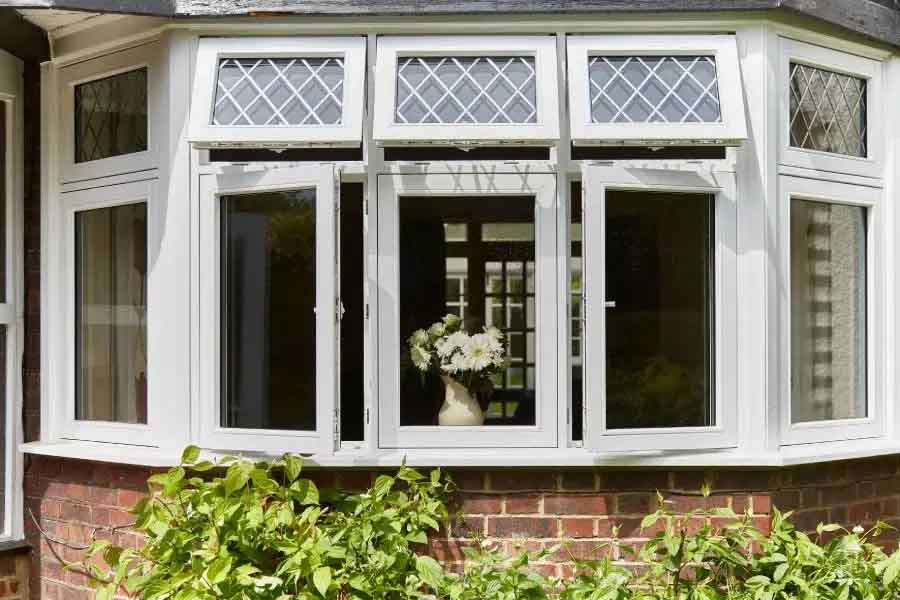BREEAM NC V7: What has changed for the IAQ sector? (Updated 2025)
With the recent update from BREEAM New Construction V6 (2022) to V7 (2025), the Technical Manual has undergone significant changes to how sustainability and wellbeing-focused businesses can achieve a BREEAM certification. This new version not only introduced additional credits up for grabs, it also changed some key criteria.
With this update, BREEAM is making even more of a name for itself in the Indoor Air Quality (IAQ) and Indoor Environment Quality (IEQ) sectors as we anticipate these changes to inevitably impact the perspectives and practices used within the engineering and construction industries. Let’s explain why these changes to this esteemed certification actually benefit everyone, from office workers to property developers.. Follow along and let’s discuss everything you need to know about how the Indoor Environment Quality (IEQ) landscape is about to change under BREEAM V7.
What is a BREEAM certification?
In 2022, the Building Research Establishment (BRE) group released BREEAM V6. This is a set of guidelines that a property owner/developer must follow in order to achieve a BREEAM certification. This is typically used to showcase that a company values the wellbeing of its staff and indicates that they have made an effort to incorporate sustainability-focused methods and materials in the building process.
BRE themselves explain that the certificate is ‘to provide market recognition of buildings with a low environmental impact’, ‘to ensure environmental quality’, and ‘use robust science and best practice,’. To achieve this, BREEAM lays out guidelines like ‘health’ (labelled ‘Hea’) which explain how a new building should consider its impact on health & wellbeing. It should be understood, however, that BREEAM covers lots of practices, including land use, transport, and energy -- not just health and air quality. In this article, we will focus specifically on criteria Hea-01 to Hea-06 and how these have changed in the latest release.
What are the changes to Indoor Air Quality?
The change from V6 to V7 has significantly boosted the number of credits available, but thankfully the IAQ section of the criteria should be largely familiar to those who studied V6. The biggest changes revolve around indoor environment quality, like lighting and acoustics, rather than indoor air quality. With that being said, here are the changes to the IAQ section of BREEAM NC V7:
Under V7’s specifications, there are 7 credits available for the Indoor Air Quality criteria (AKA Hea-04, previously Hea-02) which is up from V6’s 5 credits. Producing an Indoor Air Quality Plan was previously required as a prerequisite with no credit. Now, one credit can be easily obtained by preparing this vital preliminary document.
V7 also introduces a new requirement: smoking bans must be put into place for a BREEAM rating of ‘Very Good’ or higher. Although indoor smoking is already banned in the UK, BREEAM reaches internationally and this change could help reduce the level of smoking-related pollution within indoor spaces in other countries.
Overall, IAQ hasn’t changed all that much in V7. Aside from the need to relearn the ‘Hea’ item numbers, the biggest difference is the amount of credits available. Of course, the Indoor Air Quality Plans and smoking bans have changed, but the former was already a prerequisite and the latter already exists in UK law, so we don’t expect these IAQ changes to have too much of an impact on the sector.
What are the changes to Indoor Environment Quality?
Alongside changes to the criteria, V7 shifts the ordering of these Hea items around. Don’t get caught out by the new numbering system: Thermal Comfort (Hea-05, previously Hea-04), Acoustic Performance (Hea-06, previously Hea-05), and Visual Comfort (Hea-01 to Hea-03, previously just Hea-01).
Visual Comfort has undergone a significant change; it has been split into Natural Light (Hea-01) worth 7 credits, Artificial Light (Hea-02) worth 5 credits, and Non-Visual Effects of Light (Hea-03) worth 1 credit. In total, Visual Comfort can now award up to 13 credits. This is a drastic amplification of V6’s version of Visual Comfort, which was much shorter in its criteria and awarded only 8 total credits. New inclusions to this section include: Circadian Rhythms, Direct Sunlight from Windows, and an updated minimum standard for Daylight to be rated as ‘Outstanding'.
Additionally, 1 credit under Acoustic Performance can now also be achieved for hospitality institutions which was previously only applicable to residential properties.
‘Exemplary Level’ criteria previously only offered 1 credit depending on the choices of construction materials and the levels of emissions they release. In V7, there is an extra credit available, meaning there are 2 total credits available.
If that's all a bit tough to digest, here’s ARM Environment’s BREEAM NC V7 breakdown to help understand the changes between V6 and V7:
Is BREEAM worth it?
This update makes BREEAM a more valuable certification to have. The added credits mean that companies can go further to prove they value wellbeing and sustainability. BREEAM is stepping even further into IEQ territory and establishing itself as a more prominent figure in this field not only as the public increasingly demand sustainable practices, but also by offering property owners/developers extra avenues to go down if they want to demonstrate that they value high quality environments. For environmentally and health-conscious property owners who previously sought out multiple separate certifications, it’s becoming increasingly economical to solely attain BREEAM certification, which is expanding its reach via this most recent update.
In an industry where voluntary certifications range from relatively expensive to totally unaffordable for many businesses, this update makes it more cost-effective than ever to achieve a healthy building certification. If future updates cover even more criteria – as we’re sure they will – eventually the need for multiple certifications will be redundant as one certificate, like BREEAM, will cover everything. Crucially, this would make healthy buildings certifications more affordable and we may see more developers follow guidelines like those set out in BREEAM as a result, potentially leading to an overall more healthy & sustainable building culture.
How will this latest BREEAM guidance impact the IAQ sector?
BREEAM has quite a significant stake in the IAQ sector thanks to their involvement via Hea-04 (previously Hea-02). Consequently, when companies as relevant and as influential as BRE change their guidance, it can ripple throughout the entire sector. With BREEAM putting this extra spotlight on air quality and environment quality, it’s possible that other healthy building certifications will follow and update their guidance accordingly. Guidelines sometimes also influence UK legislation, so it’s possible we will see changes to UK law that help foster healthy environments as an indirect result of this update.
We’ll be keeping an eye out to see how this update influences other certifications and guidelines; we're looking forward to our built environment becoming more sustainable and health-conscious over the next few years. If you’re interested in learning more about BREEAM, read about our HEA-04 Indoor Air Quality Testing service here or our Indoor Air Quality Plan service here.






